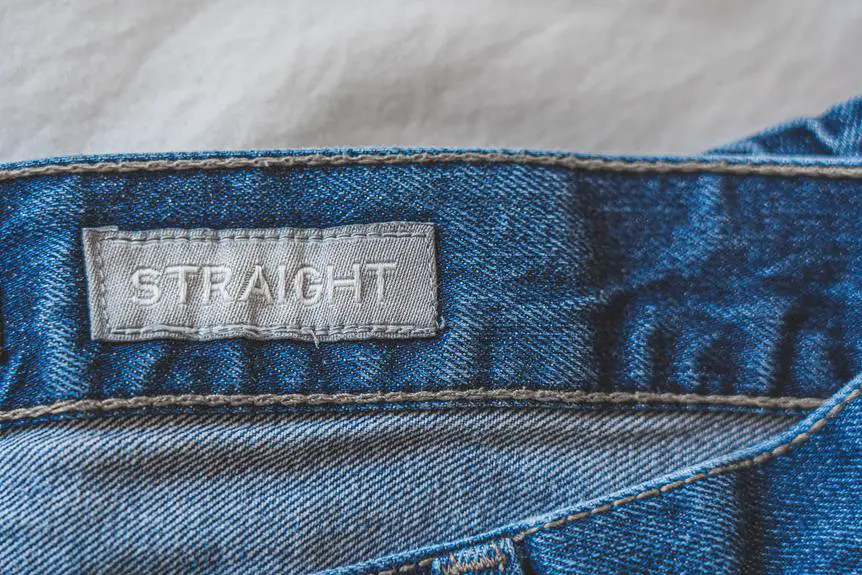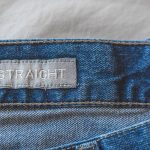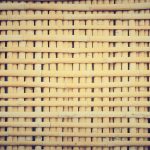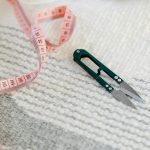When it comes to choosing the best cut for your garment, the debate between bias and straight cuts can be daunting. Understanding the nuances of each can elevate your mastery of garment construction.
Bias cut, known for its fluidity and drape, offers a unique aesthetic, while the straight cut provides structure and stability. Exploring the characteristics and advantages of each will empower you to make informed decisions based on your design goals.
By considering factors such as fabric type and desired silhouette, you can determine which cut best suits your project. Whether you seek the graceful flow of bias or the clean lines of straight, mastering both techniques will enhance your tailoring prowess.
Key Takeaways
- Bias cut garments have a more elegant and flowing silhouette, while straight cut garments offer a structured and tailored aesthetic.
- Bias cut fabric molds to the body's curves, creating a flattering fit, while straight cut garments provide more controlled fabric movement.
- Sewing methods and techniques differ between bias and straight cuts, requiring special attention when sewing bias cut fabrics to maintain their drape and shape.
- Pattern placement is easier with a straight cut, while pattern matching ease is influenced by the type of cut and design flexibility.
Understanding Bias Cut
If you're a fashion enthusiast, you may frequently encounter the term 'bias cut' when exploring different garment designs. Understanding the bias cut is crucial as it refers to a cutting technique where the fabric is aligned at a 45-degree angle to the straight grain of the fabric. This method allows the fabric to drape and stretch more fluidly, creating a garment that follows the natural curves of the body.
The bias cut enhances the drape of the fabric, giving it a more elegant and flowing silhouette compared to garments cut on the straight grain.
When working with bias cut garments, it's essential to consider the stretch of the fabric and the direction of the bias to ensure a proper fit. Sewing methods for bias cut garments differ from those used for straight grain cuts. Due to the unique characteristics of bias cut fabrics, special attention is required when sewing to maintain the drape and shape of the garment.
Understanding these cutting techniques and sewing methods is fundamental for mastering the art of bias cut garments.
Exploring Straight Cut
When cutting fabric for garments, consider the advantages of a straight cut for a precise and structured fit. The straight cut offers several benefits for sewing techniques and garment construction, making it a valuable skill for any sewing enthusiast.
- Minimal Fabric Wastage: With a straight cut, you can optimize the use of fabric, resulting in minimal wastage. This is particularly advantageous when working with expensive or limited-edition fabrics.
- Clean Finishing: Straight-cut garments often feature clean lines and edges, contributing to a polished and professional appearance. This is especially important for tailored or structured garments where precision is key.
- Pattern Placement: A straight cut allows for easier pattern placement, ensuring that the fabric pattern aligns correctly across the garment. This is crucial for achieving a cohesive and visually appealing final product.
Incorporating the straight cut into your sewing repertoire can elevate the quality and precision of your garment construction. By taking advantage of the benefits it offers, you can enhance the overall fit and visual appeal of your creations.
Characteristics of Bias Cut
The bias cut is known for its inherent stretch and drape, making it a popular choice for creating fluid and form-fitting garments.
The main advantage of the bias cut lies in the fabric behavior. When fabric is cut on the bias, it has a natural stretch due to the diagonal orientation of the weave. This stretch allows the garment to mold to the body's curves, creating a flattering and comfortable fit.
Additionally, the drape of bias-cut fabric is unparalleled. The diagonal orientation of the fabric causes it to flow and move with the body in a way that isn't achievable with straight-cut garments. This characteristic makes bias-cut garments particularly suitable for creating elegant and flowing designs, such as bias-cut skirts and dresses.
When working with bias-cut fabric, it's essential to handle it carefully to maintain its drape and shape. Understanding the advantages and fabric behavior of bias-cut garments is crucial for achieving mastery in the art of garment construction.
Advantages of Straight Cut
In contrast to the inherent stretch and drape of bias-cut garments, straight-cut designs offer a more structured and tailored aesthetic.
The advantages of straight cut designs are significant and include:
- Enhanced Durability: Straight-cut garments are less prone to stretching out of shape, making them more durable and long-lasting compared to bias-cut pieces.
- Precise Pattern Matching: The straight grain of the fabric in straight-cut designs allows for precise pattern matching, resulting in a more polished and professional look.
- Controlled Fabric Movement: Straight-cut garments provide a more controlled movement of the fabric, making them ideal for creating clean lines and sharp silhouettes.
These advantages make straight-cut designs favorable for those desiring a more structured and tailored appearance.
If you seek garments with enhanced durability, precise pattern matching, and controlled fabric movement, straight-cut designs are an excellent choice.
Factors to Consider: Bias Vs Straight
When deciding between bias and straight cuts, you should consider the fabric's drape and stretch, as well as the ease of pattern matching. These factors can greatly impact the overall look and fit of the garment, so it's important to weigh them carefully.
Fabric Drape and Stretch
Consider fabric drape and stretch when deciding between bias and straight cuts. Fabric drape refers to how the fabric hangs and moves, while stretch and movement determine the flexibility and comfort of the garment. When choosing between bias and straight cuts, these factors play a crucial role in achieving the desired look and fit.
- Fabric Drape: The way the fabric falls and flows, impacting the overall silhouette and movement of the garment.
- Stretch and Movement: The degree of flexibility and comfort the fabric provides, influencing ease of wear and range of motion.
- Sewing Techniques: Different cuts may require specific sewing methods to accommodate fabric drape and stretch, affecting construction and finishing.
Understanding how fabric drape and stretch interact with bias and straight cuts is essential for addressing fitting challenges and creating garments with optimal movement and style.
Pattern Matching Ease
To achieve pattern matching ease, you should take into account how bias and straight cuts affect the alignment of patterns across fabric panels.
When working with bias-cut fabric, the pattern tends to curve around the body, making the alignment of patterns across fabric panels more challenging.
On the other hand, straight cuts offer more predictable pattern matching, as the grain of the fabric provides a straight guide for pattern alignment.
Understanding these differences is crucial for fabric manipulation and garment construction.
Design flexibility and pattern making also play a significant role in pattern matching ease.
Straight cuts are often preferred when precise pattern matching is essential, while bias cuts can add an element of fluidity and movement to the design, but require more attention to pattern alignment.
Styling and Draping With Bias Cut
For achieving a fluid and draped look, you can style and drape fabric with the bias cut to create elegant and flattering silhouettes. The bias cut allows the fabric to drape and mold to the body in a way that straight cuts cannot.
When styling and draping with bias cut fabric, consider the following techniques:
- Experiment with asymmetrical designs: The bias cut lends itself well to asymmetrical hemlines and designs, adding visual interest and movement to the garment.
- Use draping to create flattering shapes: Draping the bias cut fabric can accentuate the natural curves of the body, creating a flattering and elegant silhouette.
- Incorporate layering for added dimension: Layering bias cut fabric can create a multi-dimensional and flowing look, adding depth and texture to the garment.
The properties of fabric cut on the bias, such as increased stretch and drape, make it ideal for creating garments with a fluid and graceful appearance. By mastering styling techniques and understanding fabric properties, you can leverage the bias cut to achieve stunning and sophisticated designs.
Tailoring Techniques for Straight Cut
When tailoring a straight cut garment, focus on precision and attention to detail to achieve a clean and structured silhouette. Straight cut tailoring requires a meticulous approach to fabric manipulation techniques in order to create a polished and well-fitted garment.
One essential technique is the careful handling of seams and darts to ensure that the fabric drapes smoothly and maintains its clean lines. Pay close attention to the grain of the fabric to maintain the desired straight cut, as any deviation can disrupt the silhouette.
When working with straight cut garments, precise measurements and accurate cutting are crucial to achieving a tailored look. Utilize pressing and ironing techniques to maintain crisp edges and seams, enhancing the structured appearance of the garment.
Additionally, consider incorporating understitching and topstitching to reinforce seams and add subtle detailing to the straight cut design. By mastering these tailored fabric manipulation techniques, you can achieve a refined and sophisticated look that accentuates the clean lines and sharp silhouette of straight cut garments.
Frequently Asked Questions
How Do Bias and Straight Cuts Affect the Drape and Movement of the Fabric?
When choosing between bias and straight cuts, consider that bias-cut fabric drapes more fluidly and moves with your body, making it ideal for creating garments that accentuate curves. Straight cuts offer a more structured and tailored look for different body types and garment styles.
Are Bias and Straight Cuts Suitable for Different Body Types and Shapes?
For different body shapes, both bias and straight cuts offer unique fabric movement and styling options. Misconceptions about their suitability can impact garment longevity, so understanding how each cut complements various figures is essential for mastering garment design.
Can Bias and Straight Cuts Be Used Interchangeably in Certain Garment Styles?
In certain garment styles, bias and straight cuts can be used interchangeably. Consider fabric drape and movement dynamics when deciding which cut to use. Both cuts offer unique advantages, so choose based on the specific design and desired effect.
What Are Common Misconceptions About Bias and Straight Cuts?
Common misconceptions about bias and straight cuts include thinking bias cuts are always more flattering and that straight cuts are easier to work with. Both have benefits and drawbacks, so choose based on your specific garment needs.
How Do Bias and Straight Cuts Affect the Durability and Longevity of a Garment?
To maximize durability, consider construction techniques when choosing between bias and straight cuts. For longevity, fabric characteristics play a crucial role. The right combination of these factors can significantly impact the lifespan of a garment.
- Will 100% Cotton Percale Wrinkle? The Honest Truth - July 15, 2025
- Why Do Toenails Tear Percale Sheets and How to Prevent It - July 15, 2025
- Why Is Percale Considered a Superior Sheet? - July 15, 2025







